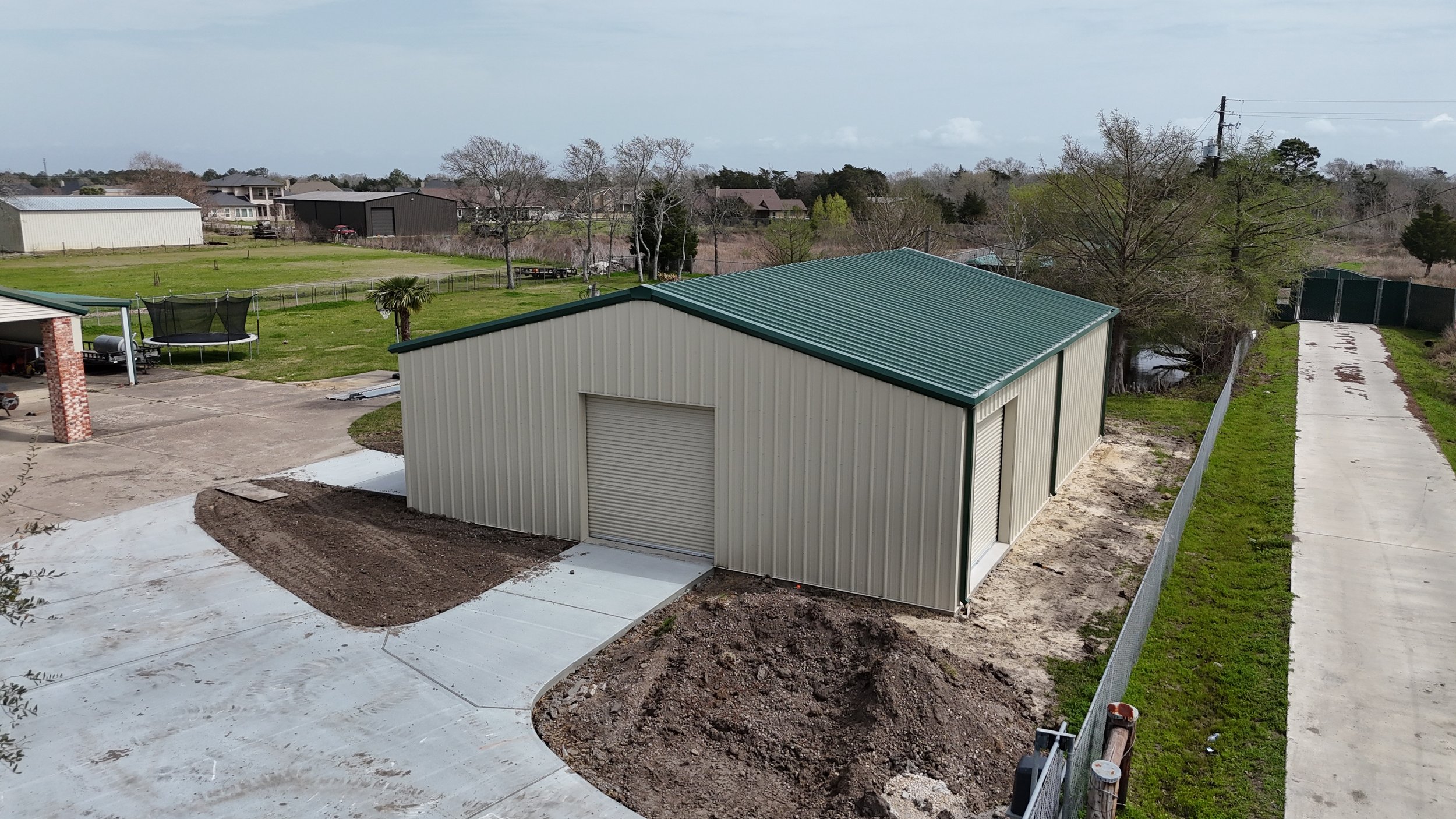Metal Building Frame Guide
Metal buildings are versatile structures that last for generations when properly designed and built. Steel is one of the most durable building materials because it resists decay and insects.
When shopping around for a residential metal building, one of the most common questions is “what are the differences in frame materials and do they matter?”. Each frame material has its advantages and disadvantages. The guide below aims to help you decided on the right building for your needs.
There are 3 main options for steel framing for you metal building: tubing, cold formed, and red iron. Here’s a quick overview of the main types along with some key factors that may impact your decision making. A more detailed description follows this table.
| Tube Framed | Cold Formed | Red Iron (Rigid Frame) | |
|---|---|---|---|
| Frame Material | Square or rectangular hollow steel tubing | Roll-formed light gauge steel | I-beams or built up frames |
| Rigidity | Moderate | Moderate to High (with proper design) | Very High |
| Span Capability | Up to ~40 ft | Up to ~60 ft | 100+ ft spans possible |
| Long-term Durability | Good | Good | Excellent |
| Foundation Requirements | Can mount over dirt/gravel | Requires full slab or footings | Requires engineered foundation |
| Ease of Assembly | Very easy (screw together) | Easy to moderate | Moderate to difficult (requires lift equipment) |
| Customization | Low | Moderate | Very High (engineered per project) |
| Cost | Low | Low to Moderate | Higher upfront, better long-term ROI |
| Building Code Compliance | May require additional engineering for permitting | Easy to permit as entire structure is engineered | Fully engineered, typically meets all code standards |
| Common Uses | Carports, RV covers, hobby shops | Agricultural barns, small warehouses, storage units | Factories, aircraft hangars, large warehouses |
Tube Framed Metal Buildings
Tube framed metal buildings are framed with hollow metal tubes. Most tubes are square, but round and rectangular tubes are also an option. They typically have horizontal siding because they do not have girts to mount the wall sheeting horizontally.
Pros
Inexpensive
Lightweight
Typically requires less robust/expensive foundation
Easiest to assemble - great for DIY projects
Higher corrosion resistance because they are galvanized
Cons
Utilize 29ga sheeting and trim, which is more prone to dents and dings
Lower strength (lower factor of safety for weight savings)
Harsh weather can damage light-weight tube framing, especially near anchor points
Lower eave heights and smaller bay spacing required to meet loading requirements
Not engineered for your specific environment
Cold Formed Metal Buildings
Cold formed metal buildings are framed with roll formed steel for column, rafters, purlins, and girts. Cees and zees are the most common shapes with depths typically ranging from 6” to 14”. They often utilize the same exact panels and trim as red iron buildings (26ga).
Pros
Inexpensive
Lightweight
Typically requires less robust/expensive foundation
Easier to assemble than red iron buildings
Higher corrosion resistance because they are galvanized
Cons
Lower eave heights and smaller bay spacing required to meet loading requirements
Fewer options for girt and purlin orientation
Not capable of supporting large hanging loads, crane loads, etc. that are common in industrial settings
Red Iron Framed Metal Buildings
Rigid iron framed metal buildings are constructed from red iron structural steel. Columns and rafters are commonly constructed of I-beam or tapered built up members. Their design allows for large, strong buildings to be quickly erected.
Red-iron is recommended if you need:
Large bays and clear spans
Lofts, mezzanines or second floors
Cranes and hoists
Pros
Strong, durable, reliable
Much more likely to survive extreme weather events like hurricanes
Higher eave heights and larger bays provide more versatility
Cons
Higher cost
More expensive in materials and erection labor
Requires stronger foundation
Engineered foundation typically recommended
Not as DIY friendly
Framing is much heavier and requires large machinery to move into place properly/safely
More prone to corrosion since they are often shipped with only a shop-applied primer
Galvanizing or field painting is recommended for areas with higher corrosion
Still can't decide? Call Texas Steel at 832-314-3555 and tell us about the project you have in mind. We can help you determine the best frame for your metal building project.













